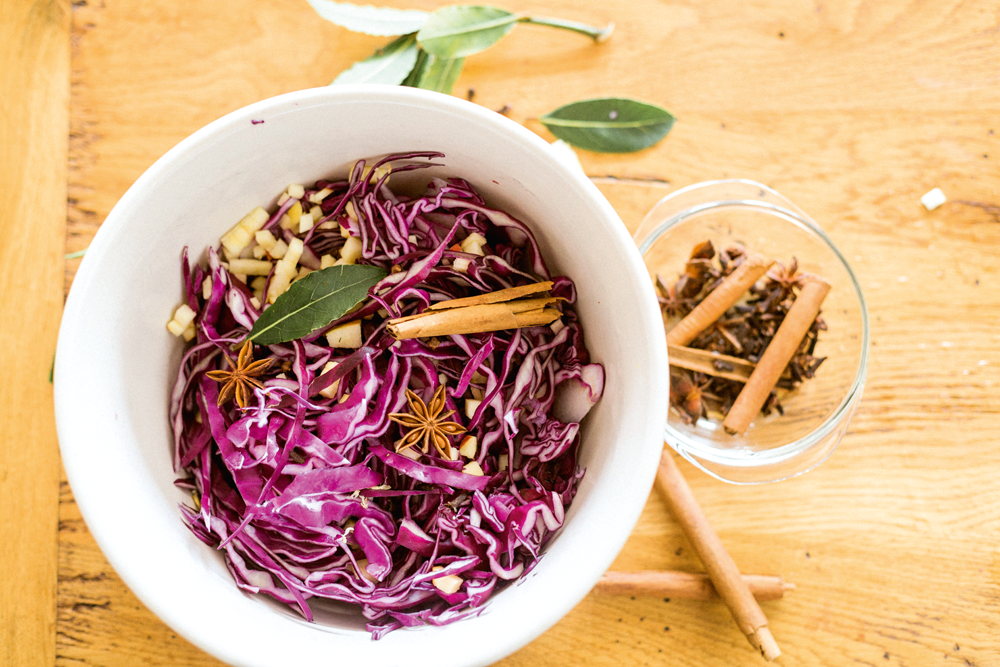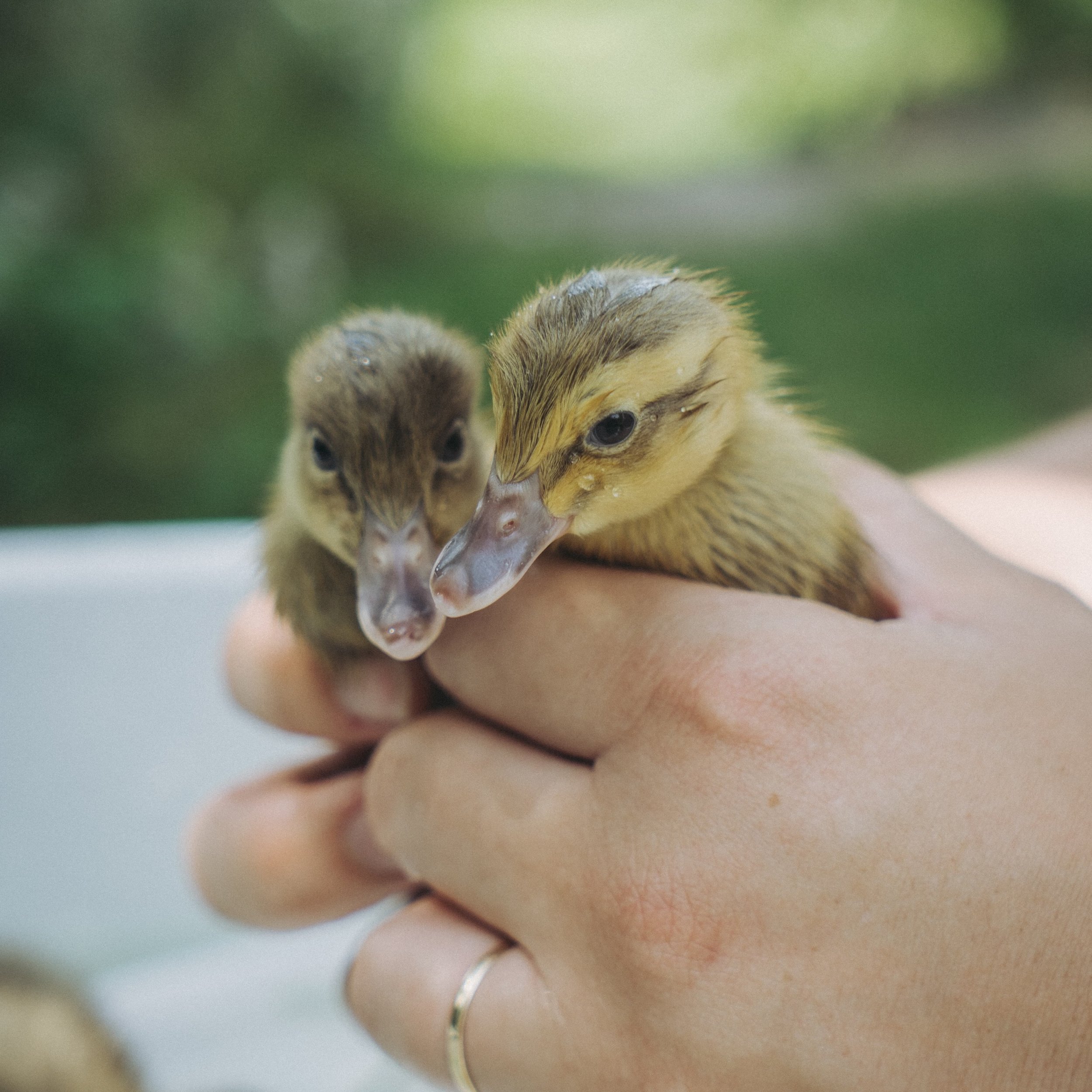Featured
Photography: Unsplash
Recipe | Kombucha
Tea’s good for so much more than a cuppa and a sit down. Try this simple and healthful kombucha
You will need:
2 organic green tea bags
2 organic black teabags
200g granulated sugar
1 medium scoby and starter water (you can make your own or buy them here happykombucha.co.uk/collections/kombucha-scobies)
2.5 – 3ltr glass jar
Tightly coven cloth (a tea towel will do)
Elastic band
How to make
1. Add 1.8 litres of water in a saucepan and bring to the boil.
2. Remove from the heat and add the sugar. Stir to dissolve then add the teabags and allow to cool.
3. Once cooled, remove the teabags, without giving them a squeeze, and pour into your glass jar.
4. Stir in the starter water then carefully add the scoby with clean hands. Leave a 5cm gap at the top then place the cloth over the top and secure with an elastic band.
5. Ferment for 7-days at room temperature, out of direct sunlight, but not in a cupboard as it needs air. The scoby may float around and a new one will form at the top and the two may join together, this is just part of the fermentation process.
6. After 7 days start tasting your kombucha daily by pouring a little into a cup. When the taste is the right mix between tart and sweet (this can take up to 10 days) the kombucha is ready. Remove the scoby and pour the kombucha into smaller bottles
Cook’s note: To add flavours you can add fruit, herbs and spices for secondary fermentation. Simply add the fruit to your kombucha, leaving it for several days before drinking before decanting into bottles. This will keep in the fridge for up to three months.
You can find a recipe for Kombucha chutney, as well as lots more ‘Magical Pickles’ in our November issue. The recipes by Rachel de Thample, from her book Fermentation: River Cottage Handbook No.18 (Bloomsbury) include Sea Shanty Fennel, Honey-Fermented Carrot Jam, Fermented Ketchup and Smoky Beetroot Kimchi.
Buy this month's The Simple Things - buy, download or subscribe
More fermenting and pickling…
More from our November issue…
Competition | Win a £300 skincare treat
We’ve teamed up with family-run business Q+A to give you the chance to win a year’s skincare supplies
One of the things we love about Q+A products is that they take the guesswork and mystique out of skincare. Every tube, jar or tub comes clearly labelled with a practical checklist so you know exactly which skin type and skincare concern it benefits. Plus there’s handy info on the active ingredients we all want to learn more about.
Formulated with care and in small batches at its family-run site in Norfolk, Q+A focuses on high-quality natural ingredients that are known to give noticeable results – from ginger root to seaweed peptides. The company is proud, too, to consider its environmental impact at every level.
Recently Q+A has launched its natural beauty range with high-street retailer Holland & Barrett. We think it’s a great match in terms of green beauty. Both Q+A and Holland & Barrett place considerable importance on sustainability, sourcing as much as possible within the UK to create new products that will benefit you as much as the earth. This partnership means you’ll now find Q+A at more than 700 UK Holland & Barrett stores.
To celebrate the launch, Q+A is giving away a year’s worth of skincare to three lucky readers. With the entire range of 13 products to choose from, delivered when you need them straight to your door, this is one not to miss. Awarded in the form of a £300 Q+A voucher, the choice on what you spend it on is yours. Opt for staples such as Holland & Barrett’s bestselling Hyaluronic Acid Facial Serum or Collagen Face Cream, or something new like 100% natural Liquorice Lip Oil.
How to win
For your chance to win one of three £300 Q+A vouchers to spend online at qandaskin.com, enter by clicking on the button below by the closing date of 4 November 2020. and answer the following question:
Q. Where are Q+A’s small batch skincare products made?
Terms and conditions
The competition closes at 11.59pm on 4 November 2020. A winner will be selected at random from the correct entries received and notified soon after. The winner cannot transfer the prize or swap it for cash. The voucher can be used only at qandaskin.com. Details of our full terms are on page 127 of the magazine and online at icebergpress.co.uk/comprules
Buy this month's The Simple Things - buy, download or subscribe
More from our October issue…
Illustration by Jennie Maizels
Nature studies | Fly Agaric Toadstools
Get to know this familiar fungi a little better…
These pretty red toadstools with white spots have graced the pages of many a fairytale and greetings card, but spotting a real one in the wild is pretty special. Here are a few facts you might not know about these magical mushrooms…
They are mycorrhizal, meaning they form a mutually beneficial relationship with the tree that hosts them.
They’re most commonly found in forests that are home to birch or pine trees.
Fly Agaric take their name from the fact that they attract and kill flies. They used to be mixed with milk and left out in dishes to kill flies.
The toadstools are also hallucinogenic. One of the effects of eating them is a distortion in one’s perception of size. Lewis Carrol made a nod to this in his depiction of the toadstool in Alice in Wonderland, in which the caterpillar tells Alice that eating from one side of the mushroom will make her grow bigger and the other side will make her grow smaller.
The Fly Agaric often featured on Victorian Christmas cards as a symbol of good luck.
Reports of human deaths from eating Fly Agaric are very rare, but all the same, we would advise against trying it.
You can find out more about Fly Agaric at The Woodland Trust’s website.
And if you’ve been inspired, why not learn to draw one of these beautiful shrooms yourself, like the ones above? In our October issue we have a drawing workshop by Jennie Maizels, founder of Sketchbook Club. You can find a tutorial on how to draw toadstools and other autumnal things by Jennie on page 22. Jennie has run Sketchbook Club from her home and online for five years. For all the kit you need to get started, including paints, pencils and paper, visit: jenniemaizels.com and head to Jennie Maizels’ Sketchbook Club YouTube Channel for supporting ‘How to’ videos for these projects. You can also follow Jennie on Twitter and Instagram at @jenniemaizels.
Buy this month's The Simple Things - buy, download or subscribe
More from our October issue…
More nature studies…
Cake facts | root veg baking
We love a cake. We love root veg. Root veg cake are simply double the joy
We are firm believers in always having a cake in, here at The Simple Things. Our October Cake in the House page has a recipe for this deliciously moreish Beetroot Chocolate Cake from Abel & Cole., who, happily, know a thing or two about root veg, too. You can find the recipe on page 25. Root veg definitely do something magical to a cake, adding both natural sweetness as well as moist texture. Here are a few more root veg that translate well into cake form.
Parsnips
Always pairs well with apples, as well as smoky syrups such as maple.
Parsnip and maple syrup cake by Darina Allen
Carrots
All nuts, but particularly walnuts) love a carrot. They pair well with oranges, too.
Carrot cake with ginger and walnuts by Nigella Lawson
Beetroot
Beetroot’s natural partner is dark chocolate which is an excellent, slightly piquant foil to beetroot’s earthiness. A creamy frosting also does the job beautifully.
Red Velvet Beetroot Cake by Lakeland
Sweet potatoes
Sweet ingredients like maple syrup and chocolate complement sweet potatoes, as do spices such as cinnamon, cloves and ginger.
Chocolate and sweet potato loaf cake by Waitrose
Potatoes
Traditionally, potatoes are paired mainly with savoury foods but they’re great at taking on flavours, too, and are a good vehicle for citrus flavours in a cake.
Gluten free lemon drizzle cake by BBC Food
Buy this month's The Simple Things - buy, download or subscribe
More from our October issue…
More from Cake in the House…
Illustration: Zuza Misko
Nature | Why Bats do Maternity Leave Best
A bit of female solidarity and a hygge attitude go a long way in the bat world
Cast aside all notions of vampires and haunted houses, bats on mat leave are all about getting cosy with their BFFs and looking after each other, and we’re just a little bit impressed by their initiative.
If you’ve ever sent a man out from under your feet because you just knew you’d get the job done quicker on your own, you might like to know that this is exactly what female bats do when it comes to giving birth.
During pregnancy, a few bat ladies get together and form a maternity colony. A bit like an antenatal group, but with small flying insects to eat instead of cake, but about the same amount of sympathising about pregnancy aches and pains. Mostly these colonies are made up of fewer than ten bats, but they can be huge; Bracken Cave in Mexico has a maternity colony of around 15 million bats!
Once a colony is formed, the bat babies (called pups) are born within a few weeks. (The male bats continue to stay out of things - we expect they’re at the pub, patting each other on the back for doing absolutely no hard work in all this at all). The female bats and young live together for the next few weeks to help each other out in the early days of parenthood. Bats usually only have one baby each, but they need to keep themselves warm in order to keep milk production going to feed their pups, so they all snuggle up together to benefit from each other’s warmth.
After four or five weeks the bats begin to venture out to find solid food for their pups and slowly begin to fly the roost. Who ever said a woman needed a man about the house?
The Bat Conservation Trust has lots of advice on what to do if you think you have bats roosting in your property. They say that female bats in maternity colonies are particularly sensitive and will abandon their pups if disturbed so if you’re doing work in your loft or roof during summer time, it’s especially important to check for bats first.
Bats are our ‘Magical Creature’ of the month in our October issue, so you can read more about them there. If you’ve ever admired the beautiful illustrations on our Magical Creatures series by Zuza Misko, you might like to know that you can buy them in our shop.
Buy this month's The Simple Things - buy, download or subscribe
More magical creatures…
More from our October issue…
Photography: Louise Gorrod
Make | A Pumpkin Bird Feeder
Make pumpkins less scary and more carey for a variety of garden birds
As well as being delicious to eat at this time of year, pumpkins provide the basis for some simple crafts, too. In our October issue, we have a few fabulous ideas for things to do with pumpkins (other than carve them into scary faces). There are lots more ideas here on our website too. Pumpkin beer keg, anyone?
In the meantime, get started with this really easy-to-pull-off make.
You will need:
Small pumpkin or squash (we used a ‘Red Onion’ squash)
Knife, a spoon and a skewer
2 twigs, each about 12–15cm long
Twine, about 1.5m
Drawing pin
Bird seed
1 Halve the pumpkin horizontally and scoop out the seeds, leaving 2cm of flesh intact.
2 Using a skewer, make two holes, opposite each other and large enough to securely hold the twigs. Stick a twig into each hole.
3 Cut the twine in half. Holding the two pieces together, tie a knot in the centre. You should now have four lengths of twine, joined by a knot.
4 Turn the pumpkin upside down and secure the knot of your twine to the bottom of the pumpkin with a drawing pin. Turn up the right way and adjust the lengths of twine so that the pumpkin sits straight. Knot the four lengths together at the top.
5 Fill the pumpkin with seed and hang it outside for the birds to feast on.
Find the rest of the pumpkin craft ideas on p50 of our October issue.
Buy this month's The Simple Things - buy, download or subscribe
More fun with pumpkins…
More from our October issue…
Photography: Emma Croman
Recipe | Warm Blackberry and Almond Overnight Oats
This breakfast is autumn in a bowl and will give you something to get up for on dark mornings
Overnight oats are slow food at their best. Spend a quiet evening making the blackberry compote to warm gently when you need it ,and putting your oats in to soak, and in the morning you’ll be rewarded with a filling breakfast to put a spring in your step all morning. It’s an ideal use for one of your pots of frozen blackberries, but it’s very easy to subsitute other fruit, or a diffiernt nut butter. Get creative and make the recipe your own if you like.
Serves 2
½ large red apple
2 tbsp almond butter
For the blackberry compote:
250g blackberries
1 tbsp maple syrup
1 bay leaf
Squeeze of lemon juice
For the porridge:
100g rolled oats, soaked in 250ml water for at least 30 mins, ideally overnight
250ml unsweetened almond milk
¼ tsp sea salt
1 tsp coconut oil
2 tsp raw cacao powder
1 Make the blackberry compote by heating the blackberries, maple syrup, bay leaf and lemon juice in a small pan with 1 tbsp of water. Once bubbling, remove from the heat and set aside.
2 Put all the porridge ingredients, including the soaking water, in a medium pan set over a medium heat. Stir for 3-4 mins, until the oats start to come together, the coconut oil has melted and the cacao powder has blended in.
3 Grate the apple (reserving a couple of slices to garnish). Spoon the porridge into deep bowls and top each with 1 heaped tbsp of blackberry compote and 1 tbsp of the almond butter. Finish with the grated and sliced apple .
Cook’s note:Soaking grains helps to break down their tough outer layer, making them easier to digest.
This delicious breakfast is just one of the recipes from our October feature Against the Grain by Louise Gorrod, with photography by Emma Croman. It also features recipes for Barley Porridge with Roasted Plums, Yoghurt and Toasted Almonds; Porridge with Caramel Sauce, Apples and Toasted Hazelnuts; Pumpkin Barleyotto with Manchego and Pumpkin Seeds; and Cheesy Rye Gratin with Ale and Mustard. The October issue is in shops now.
Buy this month's The Simple Things - buy, download or subscribe
More from our October issue…
More breakfasts for cold mornings…
Bonnie and Bess photographed by James Gardiner
Dogs | Pedigree Chums
A canine companion really does make any house a home.
Sometimes they also make any newspaper a shredded mess, any slipper a pile of rubber shavings and any lovingly prepared dinner for you a fast food takeaway for them. But we’ll not dwell on that.
In our October issue we feature some fabulous photos of a few beautiful dogs in their beautiful homes, from the book Cool Dogs Cool Homes: Living in Style with Your Dog by Geraldine James (CICO Books). Photography by James Gardine. We’ve featured one of them here just to give you a sneak doggy preview.
All those stylish dogs in their stylish homes got us to wondering which types of stylish dogs are the most popular. So we looked it up. And here is the definitive answer.
In 2019, according to Kennel Club registrations, these were the most popular pedigree breeds:
Labrador Retreiver
French Bulldog
Cocker Spaniel
Bulldog
English Springer Spaniel
Golden Retriever
Dachsund
German Shepherd
Pug
Miniature Schnauser
Reader offer
Readers can buy a copy of Cool Dogs Cool Homes for the special price of £15 (RRP £19.99). To order go to rylandpeters.com and use code SIMPLEDOGS at checkout. Offer valid until October 31st 2020.
Buy this month's The Simple Things - buy, download or subscribe
More from our October issue…
More canine companions…
Photograph: Alamy
Nature | Tree tunnels
Walk through a tree tunnel near you and feel like you’re entering fairyland
Those moments when you walk (or sometimes drive) through a tunnel of trees are a bit special, giving you at once a feeling of being hidden from the world and also transported somewhere magical. Of course you know that at the end of the tunnel the world will be much as it was on the side you entered it, but the strangeness of being cocooned by trees brings, just for a moment, that feeling that anything is possible and at the end of the tunnel might lie an entirely different world.
Some tree tunnels are partially ‘man’made’, with trees planted in avenues to offer a shady walk in summer and a canopy of silhouetted branches in winter. Others are formed naturally, when a path is formed through trees by either footfall or vehicles and the branches meet in the middle overhead, never able to grow lower than the tallest person who regularly passes through.
We think a good tree tunnel is a very fine focus for a good autumn walk, so we’ve listed a few of our favourites around Britain and Ireland. We hope you can find one near you. Send us a postcard from Fairyland!
Halnaker, West Sussex
Halnaker (pronounced ‘Ha’nacker’) is just north of Chichester and this tree tunnel walk (pictured above) follows the ancient Roman road, Stane Street. The woodland path has worn down over the years, giving the whole tunnel a circular effect and the look of a Tolkien novel.
Kilham, East Yorkshire
Immortalised by David Hockney, who painted this tree tunnel in various seasons (they were exhibited at the Royal Academy for some time), this tunnel is between the villages of Langtoft and Kilham. Hockney painted them outside, rather than in his studio, and it’s worth familiarising yourself with the pieces before you visit; you get the feeling of stepping around Hockney himself seated at his easel as you approach.
The Dark Hedges, County Antrim
Created by more than 150 beech trees planted along the Bregagh Road between Armoy and Stanocum by the Stuart family as an entrance to Gracehill Manor, this tunnel is so spooky it’s been featured in films and TV series including Game of Thrones. It’s seriously spooky, with branches that look terrifyingly like they might just reach down and pluck you off the road.
Laburnum tunnel, Bodnant Garden, Conwy
This 55m-long laburnum arch was planted in 1880 at Bodnant Garden, now owned by the National Trust. It’s believed to be the longest and oldest in Britain and is best visited when the flowers are in full bloom and hanging down into the tunnel at the end of May and the beginning of June.
Yew Tree Tunnel in Aberglasney Gardens, Camarthenshire
It’s difficult to date yews. Experts originally thought this tunnel to be a thousand years old but in the 1990s dendochronologists (tree-daters to you and I) decided it was probably only a quarter of that age and guess it was planted in the 1700s. It proved enormously popular in the Victorian era. Victorians went mad for yews, apparently.
Gormanston College Fairytale Tree Tunnel, County Meath
The cathedral-esque curves of this tree tunnel in the grounds of Gormanston College near Dublin makes for a spooky walk with a quiet reverence about it.
Untamed tree tunnel, Kilsyth, North Lanarkshire
Some of the best tree tunnels are the slightly wild ones you just happen across. Kilsyth has one in the Burnside area, close to the sportsground. As haunted-looking as some of the most famous tree tunnels but a bit rougher round the edges and more ‘real’, this is a joy to find as you turn into it.
Rhododendron tunnels, Sheringham Park, Norfolk
Paths and tunnels weave through the rhododendrons at Sheringham Park. They’re at their colourful best in Spring and perfect for a game of hide-and-seek, no matter your age.
Hollow Way, Monksilver, Somerset
Hollow Way is the perfect moniker for this sunken Lane which creates a perfectly round tunnel through the trees. We recommend a stop off at the Notley Arms Inn on the way back to rest weary legs. https://www.notleyarmsinn.co.uk/en-GB
Yew tunnel, Easton Walled Garden, Grantham
Another yew tunnel, but they really do make for the best tunnels. And if it gives you a taste for the labyrinthine, the gardens also have a turf maze to enjoy. Visit in late winter or early spring to enjoy the woodland snowdrops, too.
Do share your favourite tree tunnels with us in the comments, and turn to page 17 of the October issue to read more about understanding your walks from outdoor guru Tristan Gooley.
Buy this month's The Simple Things - buy, download or subscribe
More from our October issue…
More tree-mendous blogs…
Photography: Cathy Pyle
Recipe | Cinnamon Popcorn
In our October issue we have a special ‘Crafternoon’ Gathering feature, with ideas for making an autumnal wreath and a few delicious snacks to fuel your creativity. We think this cinnamon popcorn would be just as good with a Saturday night movie, too. Here’s how to make it…
Makes 1 large bowl
100g popping corn kernels
2 tbsp coconut oil
2 tbsp maple syrup
1 tsp cinnamon
1 Pop your kernels using your preferred method (popcorn machine, microwave or hob).
2 Melt the coconut oil in a small saucepan on the hob, then stir in the maple syrup and cinnamon.
3 Pour the warm liquid over the popcorn, season to taste with salt and stir until thoroughly coated.
You can find this and the rest of the recipes by Kay Prestney and photographed by Cathy Pyle in our October issue on page 8, including Cranberry and Camembert Puffs, Rosemary and Orange Mocktails , Smoked Trout Dip, Spinach Twists and Chocolate Brownies. There are also instructions on how to make your autumnal wreath.
Buy this month's The Simple Things - buy, download or subscribe
More from our October issue…
More autumn recipes…
Illustration: Kavel Rafferty
How to | stay warm outside on cooler evenings
Keeping the chill away on late summer evenings that feel a bit brisk
Imagine that it’s been a pleasant September day, and you’re outdoors happily socialising. Then, the sun goes down, and you’re freezing. Without cutting the fun short, what can you do? Ideally, you’ll pop on some extra layers, fetch a wool rug or gather round a fire pit and carry on your fun.
In reality, you could try:
‘Borrowing’ clothes Bust out the Apprentice-style negotiations – friends don’t really need both arms of their cardie, do they?
Drinking something warm A hot cider will probably fit the bill.
Make sure you’re not sitting on a cold surface, as it’ll make you cooler.
Gentle exercise will warm you up, although avoid any sweating. Just five push-ups then?
Eating: purely to get your metabolism up, obviously.
Stuff your clothes with scrunched-up newspaper (more useful if you’re in trousers, rather than a skirt).
Or, erm, take the gathering indoors. Now that’s nice and toasty...
This advice is from our Miscellany pages in our September issue, which are full of more facts, fun and random silliness. Buy this month's The Simple Things - buy, download or subscribe
More from our September issue…
More miscellaneous fun…
Image: Shutterstock
Are you a night owl or a lark?
In our September issue, we’ve explored the idea of night owls and larks. Do you sit up late, enjoying the peaace and the dark, getting all your best work done and having the most fun when everyone else has already retired? Or do you feel the glow of satisfaction of rising with the sun and getting stuff done while the rest of the house still snoozes?
Take part in our poll below on whether you’re a night owl or a lark. We’re hoping to find out whether more Simple Things readers are early risers or stay-up-laters. We’ll let you know the results!
More from our September issue…
More wellbeing for everyone…
Playlist | Simple Favourites
Competition | Win a £1,000 shopping spree at Garden Trading
Treat your home or garden to a new look for autumn courtesy of Garden Trading
Autumn is here, and with the new season the possibility of new adventures. Particularly welcome after such a challenging and unpredictable year. But there have been silver linings to be found – not least an appreciation of the simple things and a quieter pace of life.
Many have realised that genuine contentment stems from spending time with family and those who matter, and to a certain extent from products made with as much function as style – which is at the core of Garden Trading’s ever-evolving collection. Most of us have spent much more time at home than usual these past few months, and the urge to feather our nests has been strong. With this in mind, we’re giving away a £1,000 voucher to spend online, on Garden Trading’s beautiful range of homewares, all carefully designed to create a space you’ll long to spend more time in. But which would you choose?
The new-season kitchen collection includes enamel and ceramic cookware, baking essentials and heatproof glass storage to help you make the most of home cooking and reduce waste. In the living room, autumnal toned cushions and vases complement rattan-framed mirrors designed to reflect natural light and warmth. Garden Trading has also expanded its collection of pots and planters, with styles to suit all spaces, from low-slung bowls to high-hanging potholders. Meanwhile, the new Linear furniture range majors in modernity and versatility, with sleek consoles and side tables in a range of sizes.
For more inspiration, visit gardentrading.co.uk..
How to enter
Just press the button below and answer the following question:
Q. What is the name of the new furniture range from Garden Trading?
Terms and conditions
The competition closes at 11.59pm on 4 November 2020. A winner will be selected at random from the correct entries received and notified soon after. The winner cannot transfer the prize or swap it for cash. Details of our full terms are on page 127 and online at icebergpress.co.uk/comprules.
More ways to love your home…
More from our October issue…
Photography and recipe: Catherine Frawley
Recipe | Sweet potato with cauliflower and minted yoghurt
Good mood foods to welcome autumn and warm your cockles
In our September issue you’ll find a menu of ‘good mood food’ recipes designed to be as good for your wellbeing as they are for your tum. Jacket potatoes are a great comfort food and, combined with creamy minted yogurt, make they for a really filling no-fuss meal.
Serves 4
4 medium to large sweet potatoes
Extra virgin olive oil
Small head of cauliflower, cut into florets
250g natural yogurt (or dairy free alternative)
4 tbsp pomegranate seeds
2 large sprigs of mint, finely chopped, plus extra to garnish
1 Preheat the oven to 200C/Fan 180C/Gas 6. Prick the sweet potatoes with a fork and rub the skin with a little olive oil. Place on a tray and cook for about 40 mins (depending on size) until the insides are soft.
2 Spread the cauliflower florets onto a baking tray, drizzle with oil, season, and place in the oven for the last 20 mins of the potatoes’ cooking time.
3 Add the yogurt to a bowl, season to taste, then add the chopped mint and mix to combine. Set aside until the potatoes and cauliflower are cooked.
4 When the potatoes are done and cool enough to handle, cut a large deep cross to the top and open the potato up. Add the cauliflower, 2-3 tbsp of the yogurt mixture, then sprinkle over the pomegranate seeds and garnish with fresh mint.
Why it’s a mood booster: Sweet potatoes are lower in carbohydrates than the average spud, but have all the comforting benefits. Meanwhile, cauliflower is high in fibre and B vitamins; pomegranate is also a good source of fibre and vitamins A and C, while yogurt contains nutrients that help with bone health.
You can find the rest of the Good Mood Food recipes, inclusing salmon, greens and rice bowl, simple shakshuka and a banana and brazil nut tart from page 62 in our September issue. Buy this month's The Simple Things - buy, download or subscribe
More from our September issue…
More Autumn food inspiration…
Picture courtesy of National Trust picture library
Top ten National Trust ghosts
Spooks, spirits and scones: the National Trust boasts a cast of hundreds of ghosts
In our September issue, we’ve taken a look at national treasure, The National Trust, in its 125th year, and delved into some of the houses’ lesser known residents. So we thought we should also celebrate some of the properties’ former residents who are still hanging around the hallowed halls and creepy corridors of NT properties. Here are our top ten favourite National Trust Ghosts:
1 The Roman Soldiers at Treasurer’s House
A legion of weary soldiers has been spotted a couple of times in the cellars at Treasurer’s House in York, the most interesting being in 1953 when a chap installing boilers in the cellar saw a line of filthy, weary soldiers emerge from the wall. They wore green tunics and had round shields - both facts were dismissed as incorrect at the time - these soldiers were thought to wear red and have rectangular shields. And they were visible only from the knees up. Later, it was discovered that in fact there was a legion based here who used round shields and wore green. Later still, an old Roman road was discovered about 18 inches below the cellar floor. The soldiers had been walking on the original road.
2 Francis Drake, Buckland Abbey
One of the Trust’s more famous residents who has outstayed his welcome is Sir Francis Drake who settled at Buckland Abbey in Devon when his days on the Golden Hind were over. His ghost is said to ride across Dartmoor in a black coach, driven by headless horses.
3 Dripping Man, Scotney Castle
A dripping wet man is said to haunt Scotney Castle in Kent, allegedly a Revenue Officer, murdered by smugglers and thrown into the moat, who returns regularly, seeking revenge on his assailant.
4 St Cuthbert, Lindisfarne
Holy Island in Northumberland provided sanctuary for St Cuthbert and the monk’s spirit is said to still wander near the priory to this day when the moon is full and the tide is high.
5 Anne Boleyn, Blickling Hall
Blickling Hall in Norfolk is home to several spirit squatters but the most famous of them must be Anne Boleyn. Blickling is built on her birthplace and it’s said that every year on May 19th, the anniversary of her execution, her ghost, holding her head in her own lap, is driven by ghostly coach up to the door of Blickling Hall by a headless coachman. As it nears the entrance, the coach vanishes.
6 Seven-foot skeleton, Dunster Castle
A proper, spooky, rattler of chains, this one… Dogs refuse to enter the room under the Gatehouse at Dunster in Somerset, where a giant skeleton was found manacled to several others.
7 Mr Windham the book lover, Felbrigg Hall
Bookworm William Windham loved books so much he risked his life to save the library of a friend when it caught fire and died of his injuries a short while later. But staff at his former home, Felbrigg Hall in Norfolk, often report seeing him sitting in a chair or table in the library, catching up on his reading. Apparently he only visits when a certain combination of books are left on the library table.
8 The floorboard-tampering poltergeist, Sizergh
A spirited poltergeist is said to create ‘happenings’ at Sizergh in Cumbria. Several times it has torn floorboards from the floor and flung them about the place; a sort of spirited 60-minute Makeover, if you will.
9 The White Lady, Washington Old Hall
Washington is home to many a ghost (there’s also a grey lady and a crying child) but the white lady wanders the corridors, wringing her hands. It’s said the smell of lavender pervades the place, too. We conclude that she can only be rubbing in some calming hand lotion.
10 Tutting gent, Penrhyn Castle
At Penryhn Castle, pictured above, a volunteer encountered a short gentleman in a brown suit, who entered the room, tutted, raised his eyebrows and then disappeared around the corner and vanished completely. Suggestions were that it might be the third Earl of Penrhyn, unimpressed with the new layout of his furniture.
If you’d like to go National Trust ghost-hunting near you, visit the NT’s page of their most haunted houses. Read our feature on the National Trust in the September issue starting on p70.
Buy this month's The Simple Things - buy, download or subscribe
More from September issue…
More spooky fun…
Wellbeing | ways to feel better without a hug
We’ve all missed human touch over the last few months but take heart, there are lots of ways to feel the joy of touch without it - until we hug again
Our theme for our September issue is ‘touch’ but there are so many ways in we can enjoy and interpret that. On page 34, Rebecca Frank looks at how we can compemnsate for a lack of cuddles currently. Here are a few simple ideas:
Take a long shower or a bath and notice the sensation of the water against your skin.
Rub some oil into your body after your bath or shower and give yourself a face massage whilst cleansing your skin.
Do things with your hands like baking or gardening and go barefoot.
Talk to people face to face if possible, or on the phone rather than emailing or texting.
Listen to music that makes you feel uplifted or relaxed, depending on your mood.
Make sure you do something meaningful and enjoyable for yourself every day.
Make conversation with people you meet while you’re out walking or shopping.
Buy this month's The Simple Things - buy, download or subscribe
More from our September issue…
More ways to feel well…
Photography: Carmel King
Primer | colouring colours we loved
September is ‘new pencil cases’ time for us. Join us in a celebration of colouring crayons
There’s not much that cheers our hearts more than the idea of a bit of new stationery. Once you’ve sharpened your colouring pencils ready for the new term, buy a copy of our September issue, in which we have a Sketchbook Club feature with artist Jennie Maizels to help you learn to draw beautiful birds. We also were lucky enough to visit her colourful home, and you can see those pictures and read all about it from p94. We particularly coveted her bright studio with its pots upon pots of colouring pencils, paints and crayons, and it reminded us of a time when we knew the ‘names’ of all our crayons and always had a favourite - definitely a top ten at least.
So here, in no particular order and judged completely on whim and without reason, are our favourite Crayola Crayon colours. Do share yours with us in the comments section below.
Cerulean. Blue is repeatedly voted the nation’s favourite crayon colour. After all, it deserves some credit after all that stoic painting of skies and seas. Plus, we just loved the name. Why aren’t more children called Cerulean?
Inchworm. Named for the bright green caterpillar of the geometer moth (which disappointingly is itself a sludgy brown). It reminded us of the Hans Christian Andersen song, too.
Macaroni and Cheese. A warm orange hue, named by a child as part of a competition Crayola ran in 1993 with Kraft Foods.
Purple Mountains’ Majesty. This scores points for just being really fancy - and giving Farrow and Ball a run for its money.
Corn silk. Back in the good old days, crayon colours were a bit educational, too. We mused for hours (while filling in suns and sandy beaches) over what corn silk might be. Turns out it’s the stringy bits on the top of a corn cob. Anyway, it’s a much better name than the brighter Unmellow Yellow… who wants their yellow UNmellow?
The colourful array of colouring things in the picture by Carmel King above is from artist and founder of Sketchbook Club, Jennie Maizel’s home, which is featured in our September issue. You can find a tutorial on how to draw birds by Jennie on page 102. Jennie has run Sketchbook Club from her home and online for five years. For all the kit you need to get started, including paints, pencils and paper, visit: jenniemaizels.com and head to Jennie Maizels’ Sketchbook Club YouTube Channel for supporting ‘How to’ videos for these projects. You can also follow Jennie on Twitter and Instagram at @jenniemaizels.
Buy this month's The Simple Things - buy, download or subscribe
More from our September issue…
More Sketchbook Clubs…
Five fictional (and factual) attics
We’re all predisposed to love an attic aren’t we? The chance of finding a long lost treasure, the secrecy of a huge room, hidden at the top of a house, the thrilling idea that it could be a private space just for us?
It’s little wonder they feature in so many books, both fiction and factual. The attic is a metaphor for the brain - a space right at the top of the house, where all manner of creative and imaginative happenings might occur, a place where memories are stored, and made. How many writers scribbled in garrets, locked away in a dusty loft, after all? You don’t hear of many writers furiously penning novels in sparkling open-plan kitchens, do you? They’re a space to get away, feel ‘above’ mere mortals bumbling about in living rooms and bedrooms. Here we celebrate five literary attics:
1. Thornfield Hall’s attic in Jane Eyre
The first Mrs Rochester is the inhabitant of the attic in Charlotte Bronte’s best-known novel. Jane hears various crashes, moans and the like and it transpires that the source of them all is Bertha Rochester, one-time beauty and now ‘demon’ in the attic who starts fires, bites visitors and chews up Jane’s wedding veil. Since we know Rochester is about to marry Jane bigamously, frankly we’re with the first Mrs R on this one and think the veil-shredding (and probably some of the biting) is fair enough. (Also, Mr Rochester is pretty irritating. We might have bitten him too.) Poor Mrs R jumps to her death during a fire at Thornfield but holds a special place in our hearts as the first and our favourite ‘mad woman in the attic’.
2. Jo March’s attic in Little Women
Like many women writing in attics, Jo is a bit of a bluestocking, who wished to be a boy and found her skirts cumbersome. She writes her way out of her femininity, wearing a ‘scribbling suit’ of a black pinafore to soak up the ink and a feathered cap, like a master craftsman, and into a comfortable inhabitation of confident womanhood. Again, the attic is both an escape and a sign of Jo’s superior intellect. And we loved her for her inky hands and the rats that nibbled her pencils.
3. Anne Frank’s attic in the secret annex
Never could an attic be more thrilling than the real attic in Amsterdam in which Anne Frank enjoyed some fresh air, away from the stuffiness of the rest of the annex each morning. Anne wrote her famous diary in the secret annex in which she was hiding and the rat-infested attic, which was mostly used for storage was her escape, with one little window that it was possible to look out of without fear of being seen.
4. The attic in Flowers in the Attic
Much though we love a creepy Gothic tale in autumn, we might not linger too long on this very disturbing tale by VC Andrews of incest and abuse that haunted many of our teenaged years. Suffice to say, the attic here holds many a secret and spawns many more secrets of its own. <Shudder>
5. The attic in The Yellow Wallpaper
It’s the decor that’s the real star of this novel by Charlotte Perkins Gilman. When a young woman is sent to spend a period of rest in a colonial mansion at the turn of the last century, she’s shut up in the old nursery on the top floor of the house. Far from resting her mind, the room itself turns her imagination inside out as she endlessly describes the wallpaper, comes to believe there is a woman trapped inside it and then becomes that woman herself. A beautiful feminist novel that’s deliciously creepy, too. You aren’t sure whether you want to never go upstairs again or disappear to the top of the house forever.
In our September issue our My Place feature is all about (much less creepy and much more beautiful) attic rooms like this one above by @finlay_fox. Buy this month's The Simple Things - buy, download or subscribe































































